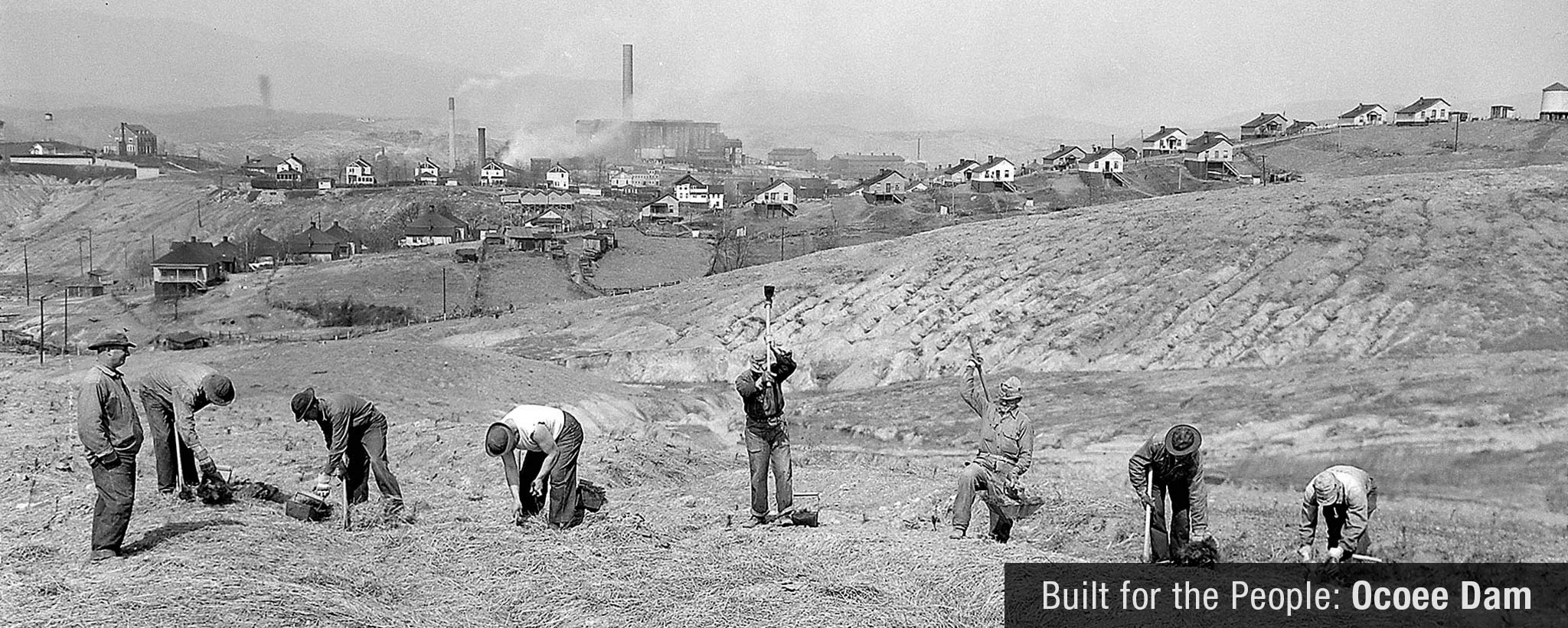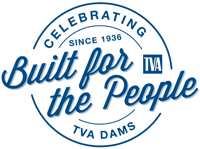
The Global View
By the time TVA set out to reclaim the environmentally devastated Copper Basin—near Ocoee Dam No. 1—the area was so barren the scar on the earth could be seen from outer space.
While folks in the Valley are proud of TVA and what it has done for our corner of the South, we don’t generally think of it as making a difference on a global scale. But some of TVA’s achievements have literally changed the way our planet looks from outer space. Beginning in the 1930s and continuing in the present day, TVA has been slowly erasing an old planetary scar that you could have seen if you were in a spaceship orbiting the earth.
Many people may not have heard of the Copper Basin. It’s hard to imagine that in moist, fertile southeastern Tennessee there was an area of more than 50 square miles—bigger than many cities—that was described in the national magazine Discover as “the only bona fide desert east of the Mississippi.” It has been compared to the Dakota Badlands, the Gobi and the moon.
But the Copper Basin wasn’t a natural desert. During the time of Jackson and Crockett, it was a dense green forest drained by the Ocoee River, near where the states of Georgia and North Carolina meet Tennessee.
Then, in 1843, copper was discovered here. By the 1850s, this patch of Polk County supported one of the biggest copper mines in America. It wasn’t the mining itself that changed the land so much as what they did to the copper ore after they brought it up.
By a process known as heap roasting, they burned away the ore’s impurities, mostly sulfur, before shipping it out. The area was too remote for the delivery of fuel by train, so they cut down the trees. Over the next few decades, they felled every tree in sight. Then they dug up the stumps and burned them, too.
An Eternal Fog
Worse, sulfuric smoke hung over the basin like an eternal fog. Mules wore bells to keep from running into one another. Though they didn’t talk about acid rain in the 19th century, they definitely had it. Almost all the rain that fell in Polk County was acid rain, and soon the soil was too acidic to grow anything.
At one time, about 32,000 acres of land lay utterly bare, or close to it. Fifty inches of rain per year not only infused the ground with acid, but began to wash it away altogether. The basin lost as much as five feet of topsoil. Birds and other wildlife disappeared. Long stretches of the Ocoee River, filled with acidic sediment, died.
By the time TVA officials got their first look at the Copper Basin in the 1930s, the destruction had been proceeding for 90 years and looked irreversible. TVA established a Civilian Conservation Corps camp in the Copper Basin, and millions of seedlings were dutifully planted, but most of them didn’t take. The soil was still too acidic, where there was soil at all. Not even kudzu, the Japanese vine that was to run riot in other parts of the South, could be made to grow in the Copper Basin.
After 30 years of replanting, Apollo astronauts in the 1960s could still use the scar in the Appalachians as a navigational aid. The three man-made marks on the planet that were visible from space were said to be the Great Wall of China, the pyramids of Egypt, and the Copper Basin in Tennessee.
Continuing Erosion
TVA might have been excused for just letting it be. But the continuing erosion in the Copper Basin was still silting the Ocoee River. About half the land remained bare, and each of those bare acres was still losing nearly 200 tons of earth a year—enough to fill eight tractor-trailer trucks. The silting of the Ocoee posed a significant practical problem for TVA, which had three dams and reservoirs on the river.
By the 1980s, TVA reported that upstream erosion had caused a 25 percent decrease in the flood-storage capacity of the reservoir at Ocoee Dam No. 1. In 1984 TVA redoubled its efforts, working hand in hand with private industry as well as other government agencies. The coalition launched a more vigorous reclamation effort that used every weapon in its arsenal at once. The Cooperative Copper Basin Land Reclamation project was under way.
Foresters identified both coniferous and hardwood trees that might live in high-acid environments. Then they broadcast seeds and fertilizer from helicopters as workers on the ground planted seedlings. In selected areas, they added lime by the ton to reduce the soil’s acidity.
TVA and partners, including BIT Manufacturing and Bowater Pulp and Paper (now Resolute Forest Products), bore the cost of the effort. Expenditures came to well over $500 per acre, but they paid off. The annual erosion rate plummeted from almost 200 tons per acre to just eight.
Songbirds Return
Today most of the denude land is now providing watershed protection benefits. Aquatic life is rebounding in once-strangled stretches of the Ocoee River. And after an absence of more than a century, songbirds and other wildlife have returned.
The Copper Basin project has drawn attention around the planet whose complexion it has improved. In 1996, the Ocoee hosted the whitewater competition of the Atlanta Olympic Games.
And in 1998, the International Erosion Control Association honored the public-private partnership’s work with its Environmental Achievement Grand Award, accepted by TVA reclamation expert and field project leader Jack Muncy.
The restoration effort is now complete. But about 100 acres in the vicinity of the historic Burra Burra mine have been left denuded—just to remind people what the earth looks like when we don’t take care of it.
